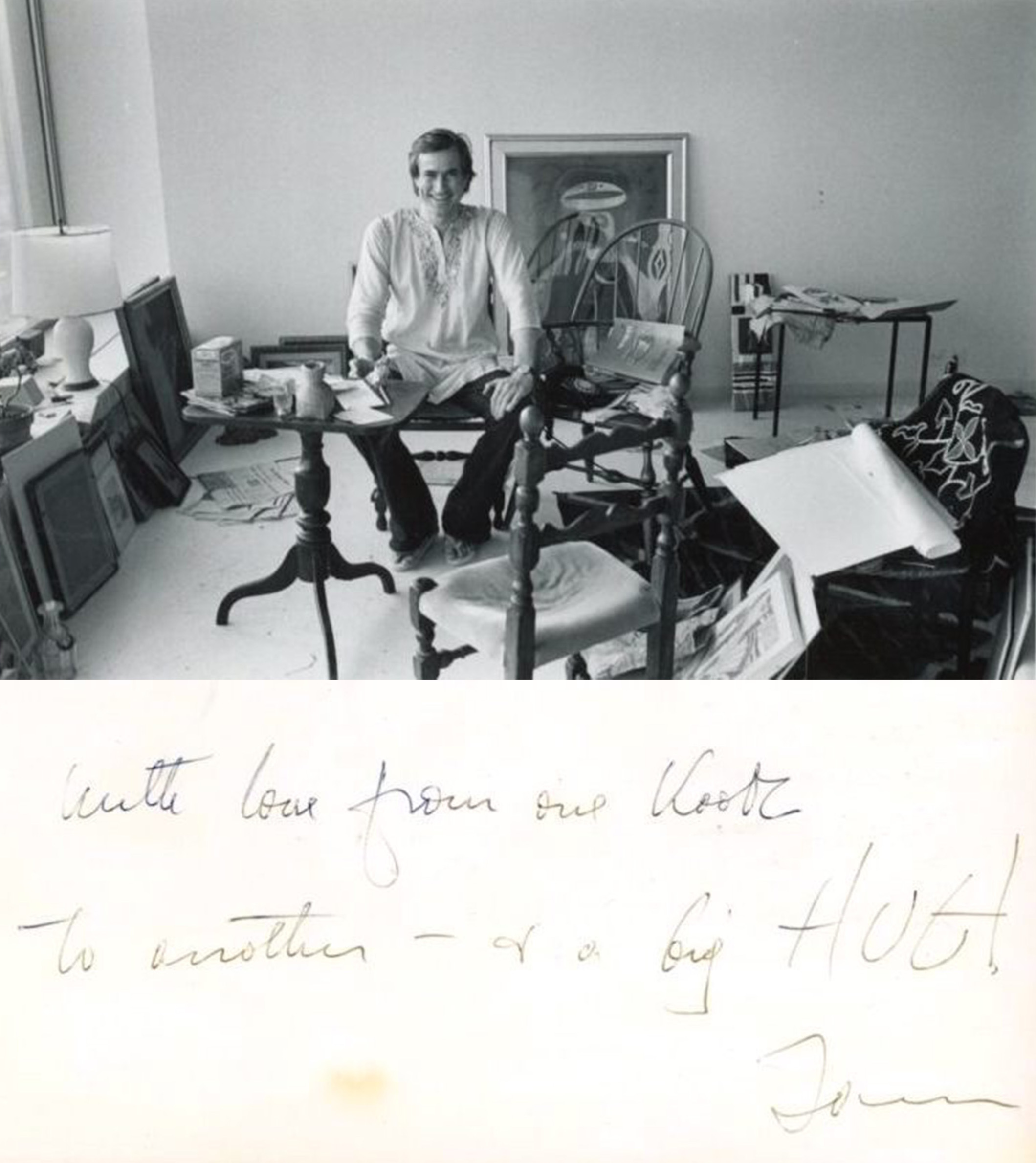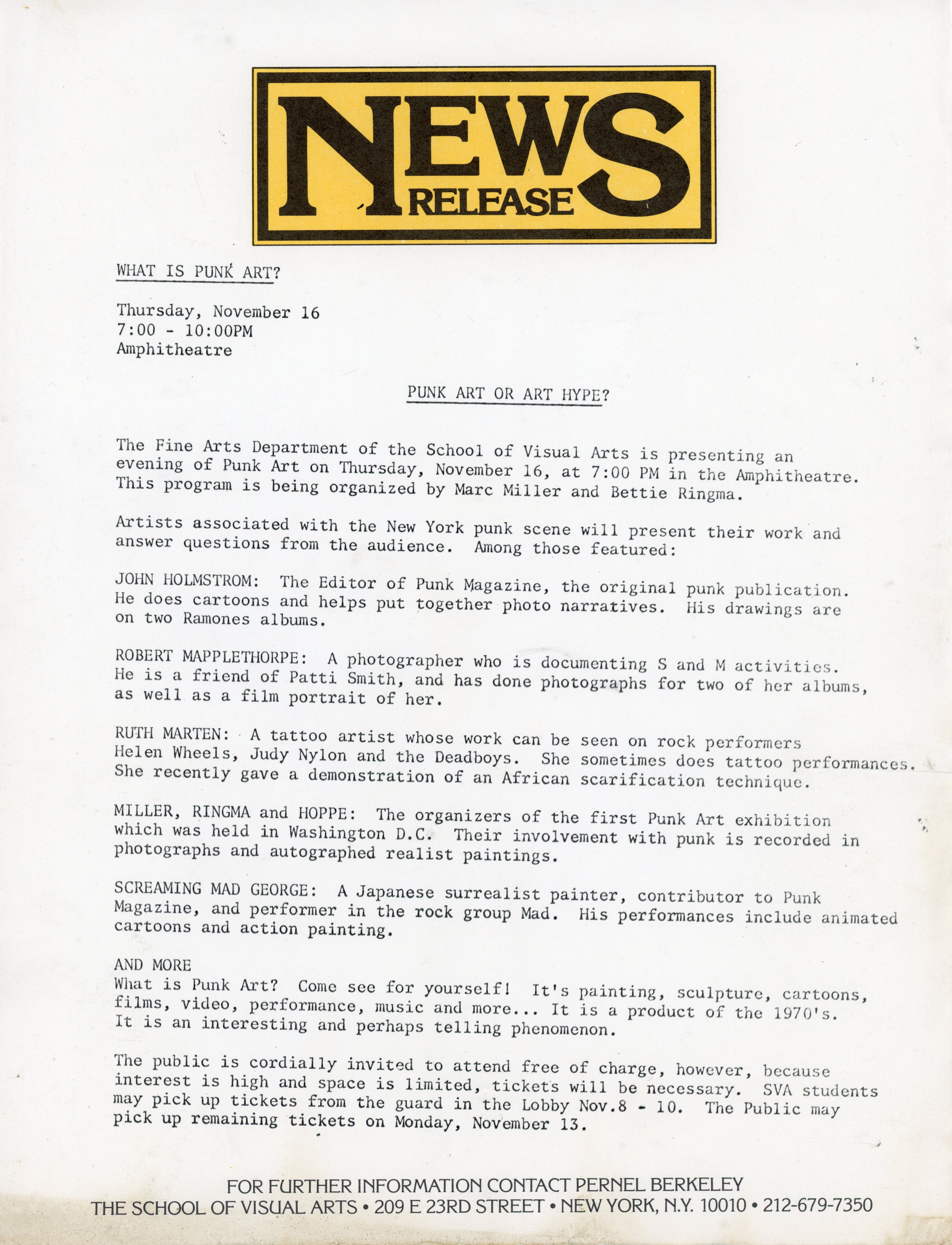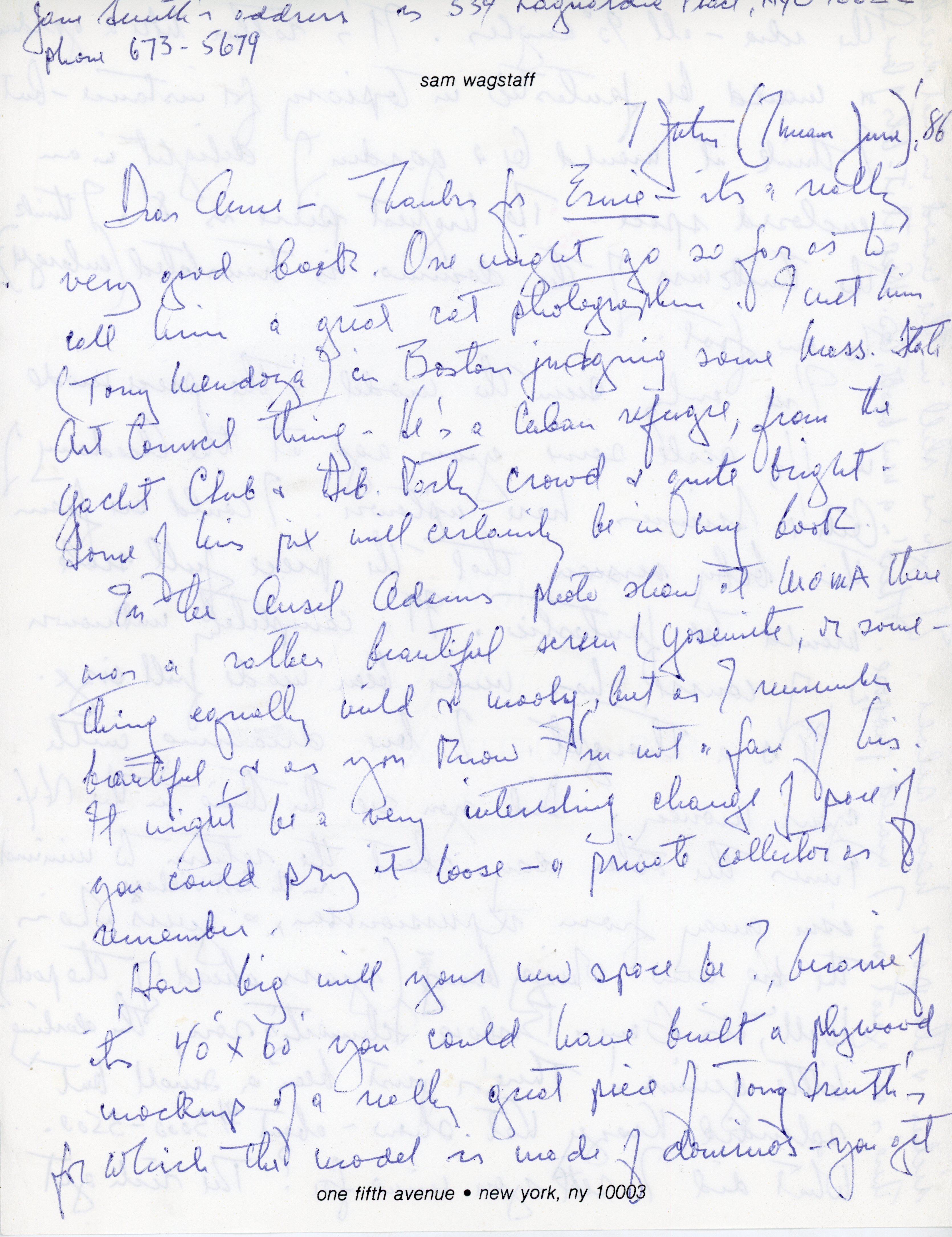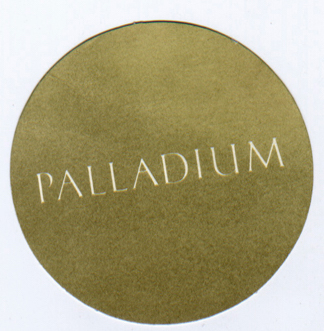Letters and Ephemera: Anne MacDonald, Sam Wagstaff, Robert Mapplethorpe
The connection between Anne MacDonald (1942 – 2018) and Sam Wagstaff (1921 – 1987) dates back to the early 1970s when she was on the Board of Trustees at the Detroit Institute of Art where he was a curator. Despite her title, MacDonald was still in her 20s and a neophyte when it came to modern art. Wagstaff was the mentor who inspired her to devote much of her life (and money) to supporting the most edgy contemporary styles. Mostly spanning from 1978 to 1986, his letters to her reflect the closeness of their connection. Wagstaff writes about his passion for photography, his pride in the success of his partner Robert Mapplethorpe, and also makes suggestions of art that might interest McDonald.
From the mid-1970s onward, MacDonald lived in California where, in the mid-1980s, she founded San Francisco Artspace, a gallery that specialized in performance and installation art, published books, and the art magazine Shift. To quote her own words, “Sam taught me through his example about the possibilities of participating in a meaningful way with the artists of our time. I never would have been able to even dream Artspace without him.”
Wagstaff’s life unfolded in New York where his interest in minimal art soon shifted to an all-consuming interest in photography, which was only then beginning to attract the attention of collectors. This change was connected to his close personal relationship with photographer Robert Mapplethorpe (1946 – 1989), whom he first began to support and promote in 1973. Their association worked to the advantage of both. Mapplethorpe quickly emerged as a major contemporary artist, while Wagstaff gained prominence as a charismatic collector of primarily historic photographs. The sale of his large collection to the Getty Museum In 1984 is often identified as the moment when photography finally gained acceptance as a serious art form.
Anne MacDonald got to know Mapplethorpe through Wagstaff, and her collection included a a large amount of Mapplethorpe ephemera, including a rare signed card for Censored, his controversial 1978 San Francisco exhibition. She also owned a signed edition of Arthur Rimbaud’s A Season in Hell published by the Limited Editions Club, that featured eight photogravures by Mapplethorpe. In a letter to Anne, Wagstaff writes about Robert’s success: “Now that he’s hit the big time and has a real business going, he’s finding that one is just poorer at a richer level, with a staff (already yet) working for him 5 days a week.”
Wagstaff never missed an opportunity to promote his talented friend. A 1978 invitation for the exhibition of his photography collection at the Corcoran Museum in Washington DC, featured a Mapplethorpe photograph rather than a better-known historical image. When Wagstaff learned that the Getty Museum would be purchasing his collection, he speculated that he might make a $100,000 donation to the San Francisco Museum of Modern Art, where MacDonald was a trustee, adding tongue-in-cheek: “Of course, you know we could make the gift contingent on or for the purpose of purchase of many, many Mapplethorpes, something galling like that for Van.” (a reference to Van Deren Coke, SF MoMA’s curator of photography).
Tragically, the lives of both Wagstaff and Mapplethorpe were cut short by AIDS. Wagstaff died first in early 1987. A commemorative dinner organized by MacDonald included a speech by Pierre Apraxine, a Wagstaff acolyte credited with assembling the important Gilmore Papers Photography Collection that is now owned by the Metropolitan Museum. To quote from a transcript owned by MacDonald: “(Along) with a whole generation of art lovers, I watched Sam singlehandedly in this country cast his magnetic net over the entire medium of photography…It is the intensity of Sam’s involvement that gave to collecting photographs its intellectual underpinning and turned it into the exciting adventure it has become for the eye and the mind.”
When Mapplethorpe died two years later, MacDonald prepared a commemorative booklet featuring ten of his self-portraits as an insert for Shift #6. Her accompanying editorial responded to the Corcoran Museum’s controversial cancellation of the Mapplethorpe exhibition The Perfect Moment, with a call for resistance to censorship: “Our art world is so fragmented these days, but censorship is something we all feel strongly about. Artistic freedom is a non-negotiable issue. Let’s find ways to fight for this together.” Over the next decade, McDonald demonstrated her own commitment by promoting artists like David Wojnarowicz, Kathy Acker, General Idea, Karen Finley and Jock Sturges with exhibitions at Artspace and articles in Shift.

From the Collection
Sold
Sold
$200
$100
Sold
Sold
Sold
Sold
Sold
$100
$150
$125
$150
Sold
$125
$250
$150
Sold
Sold
$125
$250
Sold
Sold
$100














































